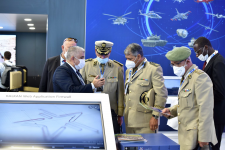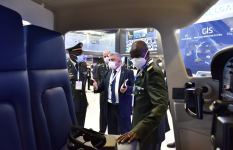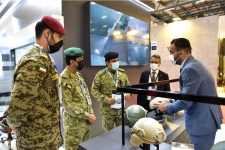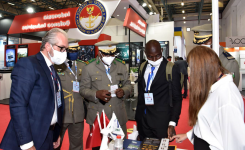What is multistatic radar ?Damn multistatic radar era is close. By the end of this decade, TR will be a monster in the defense industry.
You are using an out of date browser. It may not display this or other websites correctly.
You should upgrade or use an alternative browser.
You should upgrade or use an alternative browser.
Defence Fair IDEF 2021 News & Discussion Updates
- Thread starter Cabatli_TR
- Start date
What is multistatic radar ?
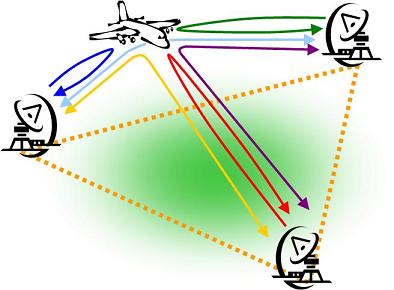
Multistatic radar - Wikipedia

MIMO radar - Wikipedia
Multi static radar I know, but is the multistatic sonar the same principle? Sonar wafes of one frigate picked up by another frigate???
Yes, or simply a system/regime of multi-sensoring arrayed in whichever way (combo of say surface, deep water, seabed).
Increasingly UUV's, wavegliders etc are simply deployed by a frigate (or even non-descript ship) and networked/datalinked to it.
But the concept w.r.t multistatic radar is same essentially.
Ulaq ASW version has a fiber optic acoustic sensor specially designed by METEKSAN for this purpose. But the real capability(signal processing, command, and control, software) will come from the Aselsan-Armelsan workgroup. Think about this MILGEM ASW version(with hull-mounted sonar and towed sonar array) that operates 2 Ulaq ASW USVs with fiberoptic towed array sonar and creates multistatic sonar capability around MILGEM. UAVs with MAD sensors and sonobuoys and Seahawk with dipping sonar and sonobuoys aid this from the air. Next level capability for ultra-silent enemies.
 www.meteksan.com
www.meteksan.com
Fiber Optic Acoustic Sensor | Meteksan Defence | Meteksan
Fiber optic acoustic sensors are a new type of acoustic sensor technology based on modulating laser light by the acoustic wave, rather than conventional piezoelectric ceramic technology.
In principle, it is the end of stealth air-crafts since stealth mainly work by deflecting incoming radiation to some other directions.What is multistatic radar ?
With multi-static, specially massive multi-static, the air-craft have higher chances of being detected by some receiver.
There are two different versions. The first version is that you have multiple transmitters and receivers working in close corporation. This increases the angular resolution of the systems to be able to see objects at longer distances. For example, you could have two small radar dishes at 500m distance sharing a very high speed data link between them. From a radar physics prospective, this would be like having a real 500 m long radar dish with respect to resolution but not signal strength. The signal strength is increased by adding more and more smaller units to the same network. This form of multi-static detection is common in radio-astronomy. This is based on pure physics (interferometry) of radio waves. This system is suitable for long range SAM systems.
The other methods is where the transmitters and receivers work in a loose configuration with slower network communication. These transcievers could be spread over the whole country. Here, a receiver may detect a signal but don't really know the exact source since it does not know who transmitted it. However, the 3D location of the air-craft can still be calculate by higher level control system which source is transmitting and receiving due to timing. This is a pure software solution which can cover wast regions. By definition, this does not increase range nor the resolution of the radar system but rather the coverage of the smaller systems.
A benefit of this solution is that is is virtually impossible to bomb it since the transmitters could be counted in the millions (think phone size units) while the location of the receivers cant be know by SigInt. One more benefit is that every source of radio is a source for the system, this include even enemy EW signals. The drawback is that is is expensive in term of energy use if the whole system is turned on all time (which it is not in reality) and that the network communication is vulnerable to hacking.
The drawback of these systems is that it is mainly a defensive system you build up before the war. The network communication must also be extremely robust or this system could be used against your own forces by remote hacking.
You might be more involved in the process than I am. I can not make such powerful claims. Because I listen to both sides and write what I understand. I believe we can provide negative and positive arguments for both sides. In my case, I have no side. I am in the middle and I question whether the hybrid solution is something that can work.Navy wants to control entire process because private shipyards once ended up messing things up in favor of making profits moreover not really watching the process closely as naval shipyard does and mostly leaving it to some subcontractors unattended and assigning their engineers on commercial projects. They are right by all means for the first ship and for the latter i also support construction at a private shipyard again under inspection of the naval forces (which actually happens but SSB involves way too much and renders naval forces ineffective in the process)
I think costs are much better managable in the naval shipyard because , 1st there is no cost for use of the shipyard it is supplied by Navy, 2nd no profit concerns nobody cares if the shipyard is occupied for several years on a single hull, 3th no financial concerns to clear slip way or to clear dock, the hull can be docked whenever needed for a redo unlike waiting for months as happened in a private shipyard. I know a case where, A private shipyard delayed a navy related project for months at the cost of extra fees to complete an order for a luxurious order, and another one where the private shipyard left something unattended and didn't check subcontractors and they ended up doing a very wrong job eventually set the project back by 6-8 months at 100m additional fees (that is somehow managed to be billed at SSB)
Private shipyards had done bad things that they deserve the attitude of Navy and navy is right to control every step in the first ship, we should all accept private shipyards are nowhere close to the naval shipyards in terms of quality. And SSB of nowadays is not really good as in the past to make it a struggle for private shipyards but they do everything to ease the job by not forcing them.
In sum: private shipyards make profit, naval shipyards make the job happen.
Combat-Master
Baklava Consumer
Excellent discussions (in Turkish unfortunately )
From 40k to 45k feet altitude. How this?
According to Baykar's website, the max altitude of Akıncı is 40k feet. I am not sure where they are getting these figures.From 40k to 45k feet altitude. How this?
2x750hp variant. It can even climb up to 50k feet if Pratt-Whitney PT-6 rumor is true.
E
Elaser
Guest
No rumor but fact2x750hp variant. It can even climb up to 50k feet if Pratt-Whitney PT-6 rumor is true.
Yeah, it is a fact that Baykar has PT-6 but we don't know whether Baykar will be using PT-6 or another engine when 750hp variant is in production.
Last edited:














